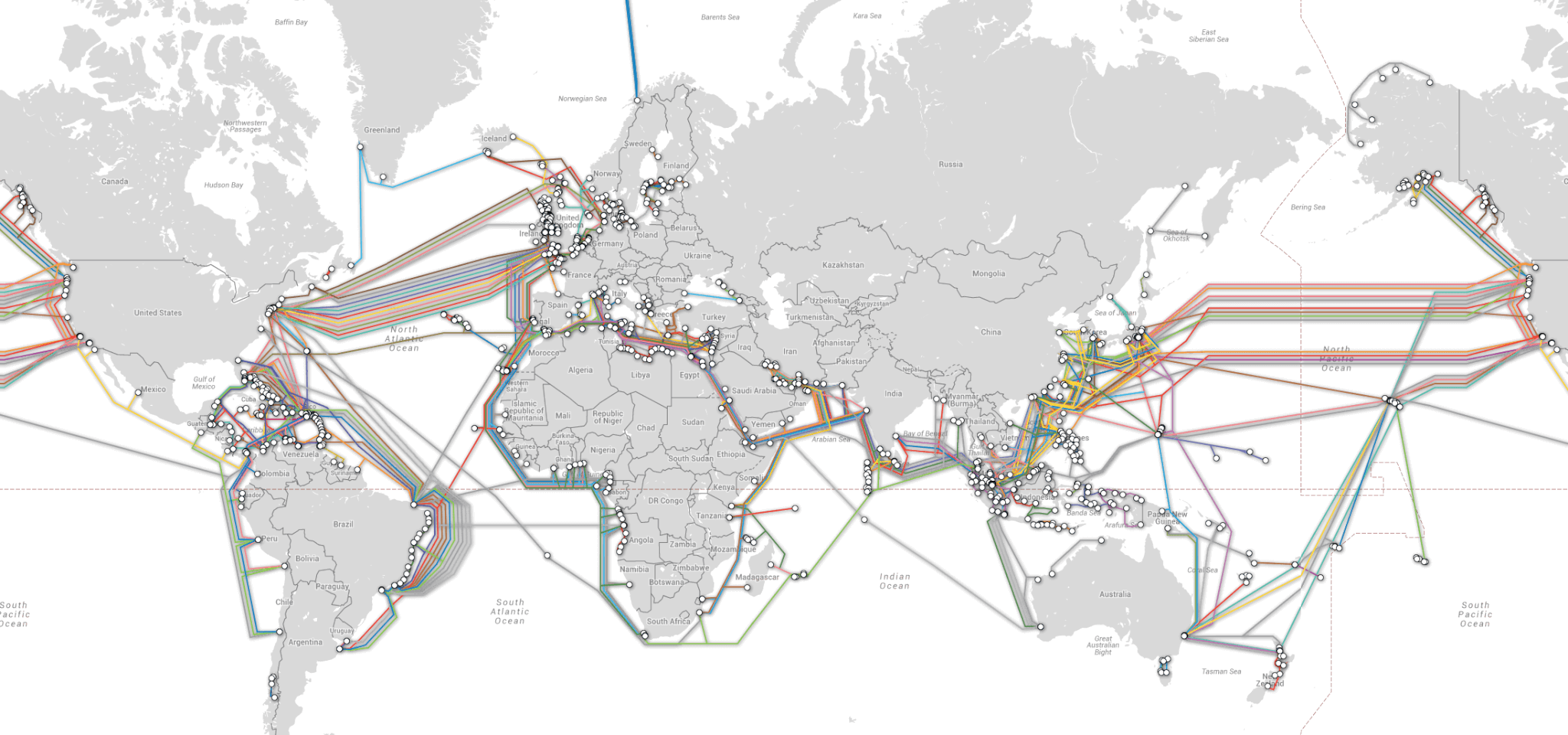Recently, communications such as telephone, television and the like were sent between countries and continents via satellites. In the new Internet era, satellites were also the conduits for all types of communication. The result for many years was high cost and low bandwidth. Satellites are still used for a variety of communications and are vital for connecting remote areas to Internet services and other forms of communication. According to some estimates, today the vast majority (99%) of communication is via fiber optic cable. This FO cable has the capacity to carry more than 3 million voice calls or 90,000 television channels. This type of communication transmission is efficient and so common that all continents, except Antarctica, use fiber optic communication. Intercontinental cabling is not new, however, the introduction of submarine cables has upped the ante in communication.
Submarine cables
The submarine cables are less than 18 centimeters thick and are laid on the ocean floor using specialized underwater vessels. These cables must be installed with precision so that the signal strength remains optimal. The labor is labor intensive and the investment is in the billions of dollars.
A brief review
The installation of submarine cables is not new; it was first introduced in the mid-19th century. Telegraph communication was the only player in the cities at that time. Now, some 150 years later, construction and installation techniques have not changed much, but technology has. Optical fibers have almost completely replaced copper cables.
Submarine cable transmission capacity
Submarine cables can transmit 40 gigabits of data per fiber strand. Each cable is made up of several wires, which increases its carrying capacity by terabytes (one terabyte equals 1,000 gigabytes). A complement to submarine cables are terrestrial cables installed parallel to roads and power transmission lines, whether subway or overhead. These cables create a network that connects cities to rural areas throughout any territory where the cable is deployed.
The future of the submarine cable
With each passing day, new submarine cables continue to be deployed around the world. One of the most recent subsea projects connects Britain to Japan under the Arctic Ocean. This project cost more than $3 billion. However, the effort is worth the cost. Now that submarine cabling is in place, communication between East Asia and Europe is immensely fast and reliable.
Also in 2019, it was publicly disclosed that Google is pursuing three new submarine cable projects – Curie, Havfrue and HK-G (the Hong Kong-Guam cable system). The latter will connect East Asia with the Pacific islands and, finally, with Australia. The first two projects will connect Los Angeles with the tip of Latin America and the United States with Denmark, respectively. The projects will increasingly increase with the implementation of the technology giant’s large investment.
Submarine cables have changed 21st century communication for the better. This technology continues to improve and promises to provide telephone, television and Internet customers with faster, more reliable and accurate worldwide connectivity through a vast fiber-optic network and accompanying fiber-optic services.




